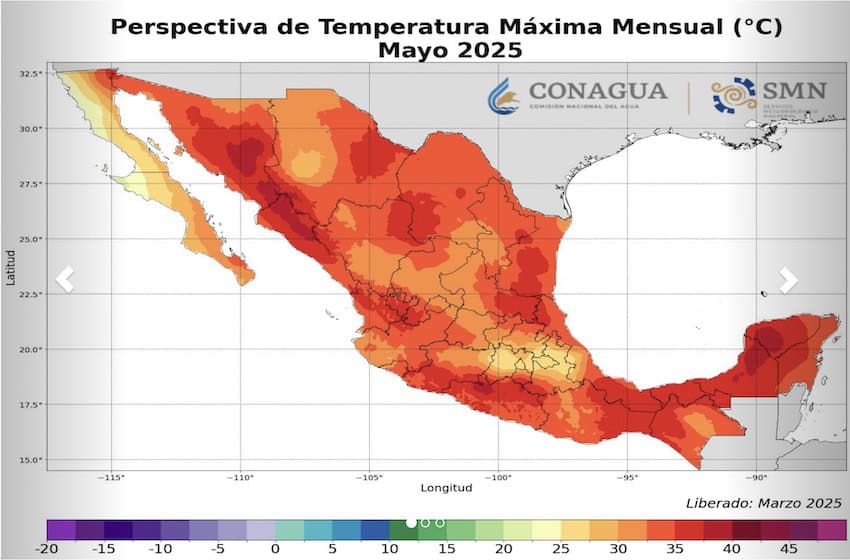After record heat and scorching drought prompted scares about a Day Zero event in June 2024 — when Mexico City was predicted to run out of water — federal weather authorities are predicting more of the same for the spring season of 2025.
Earlier this month, the Civil Protection and Risk Management Ministry (SGIRPC) projected that four or five heat waves will bedevil the Mexico City metropolitan area this spring, with temperatures expected to top 32 degrees Celsius (90 degrees Fahrenheit).

These heat waves (defined as at least three consecutive days during which temperatures are above average) will arrive in April and May, according to the National Meteorological Service (SMN), which added that each wave will last about six or seven days. The spring months are typically the hottest in Mexico City, with temperatures cooling off once the rainy season begins in June.
On May 25 last year, the thermometer hit a record 34.7 C (94.5 F) in Mexico City and, countrywide, 2024 was the hottest year on record, led by the record-setting temperatures in May — the hottest May in Mexico since 1953.
The SGIRPC also issued a warning to capital residents, reminding them that if they plan on using electric fans they must make sure they meet official standards so as to prevent short-circuits. The message also urged caution when eating at outdoor stands as food spoils more rapidly in the heat.
Heat waves have become more frequent and more intense in the capital, according to the SMN. In the 1980s, Mexico City saw roughly one heat wave each year lasting about five days. Since 2020, Mexico City has averaged four heat waves per year with one heat wave lasting an entire month.
Se pronostica ambiente caluroso a muy caluroso en gran parte de #Mexico, así como el inicio de una #OndaDeCalor sobre regiones de #Jalisco, #Guerrero, #Morelos y #Oaxaca. Ve el #Pronóstico de #Temperaturas máximas para este martes ⬇️ pic.twitter.com/i7bPywLvGw
— CONAGUA Clima (@conagua_clima) March 11, 2025
As for the rest of the country, the SMN confirmed that the first heat wave of 2025 arrived last week in western Mexico, primarily affecting the Pacific coast regions of the states of Jalisco, Michoacán, Guerrero, Oaxaca and Chiapas. Temperatures exceeded 40 degrees Celsius (105 F) in the latter four states, while the mercury hit 35 C (95 F) in states from the northern border to the Yucatán Peninsula.
The SMN’s monthly perspective for March indicates high temperatures in Mexico’s southeast and southwest, with potential for heat waves in north-central Mexico.
The country’s second heat wave is expected this week, with temperatures beginning to rise on Tuesday afternoon.
The SMN said the same westernmost states (Jalisco, Michoacán, Guerrero, Oaxaca and Chiapas) would be most affected, but the central highland states of Morelos and Puebla would also feel the heat with temps in the 40s (100 F).
The authorities are urging the public to take all precautions: stay out of direct sunlight, especially during peak hours and use sunblock, wear light clothing, hydrate regularly, eat fruits and vegetables and avoid alcohol.
With reports from Proceso, El Financiero and N+
